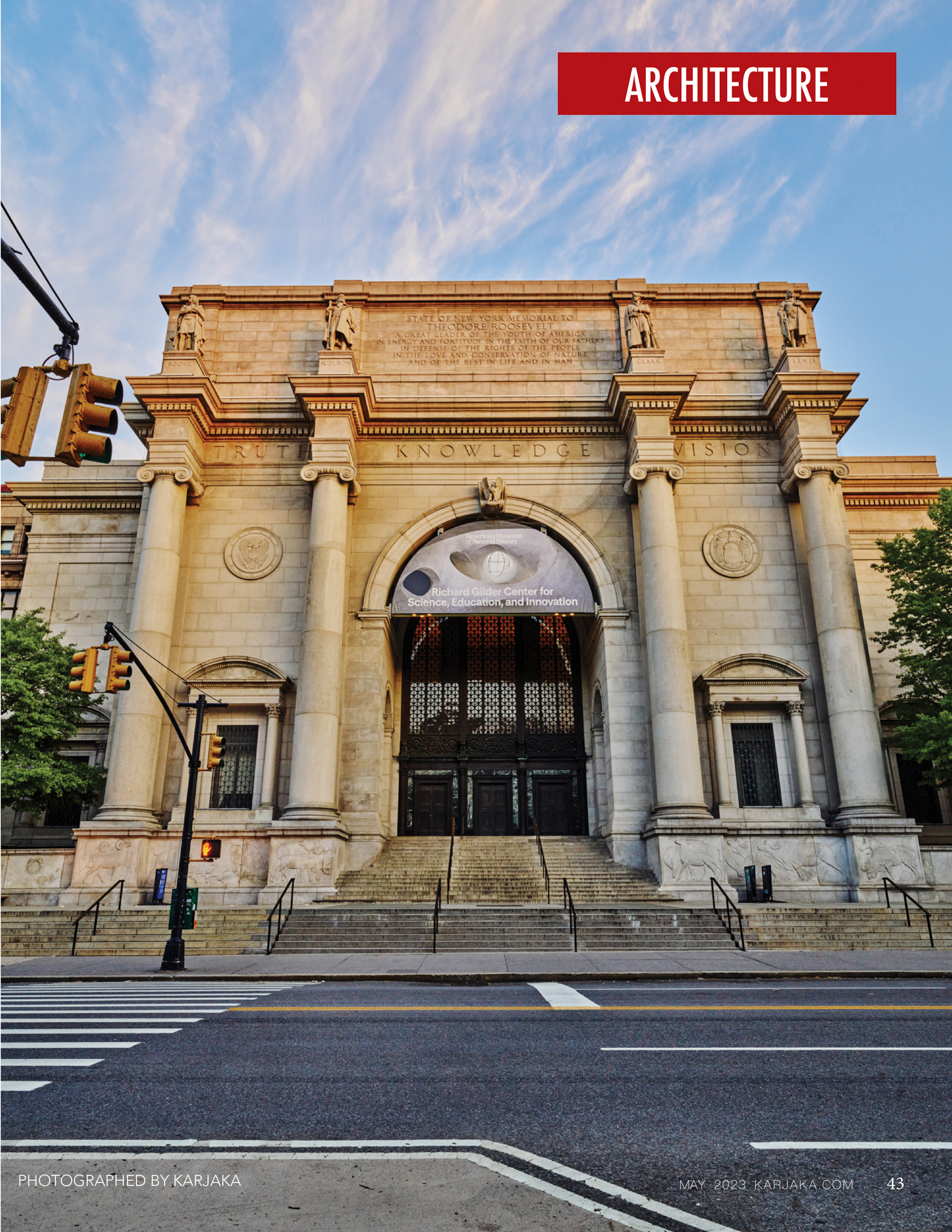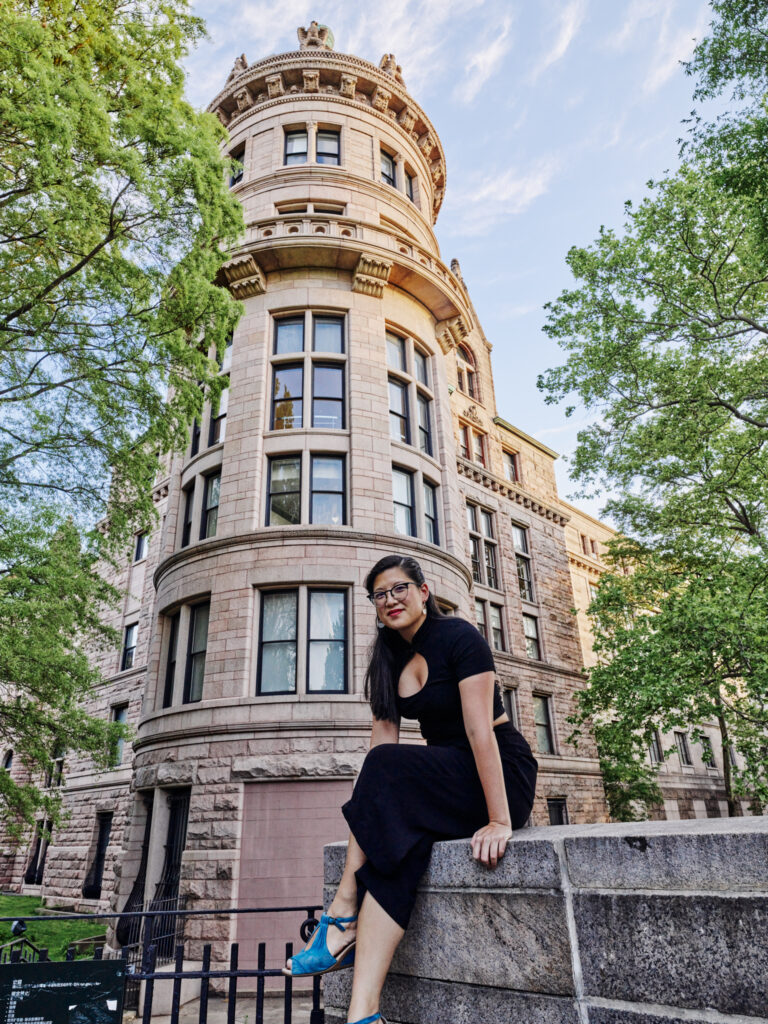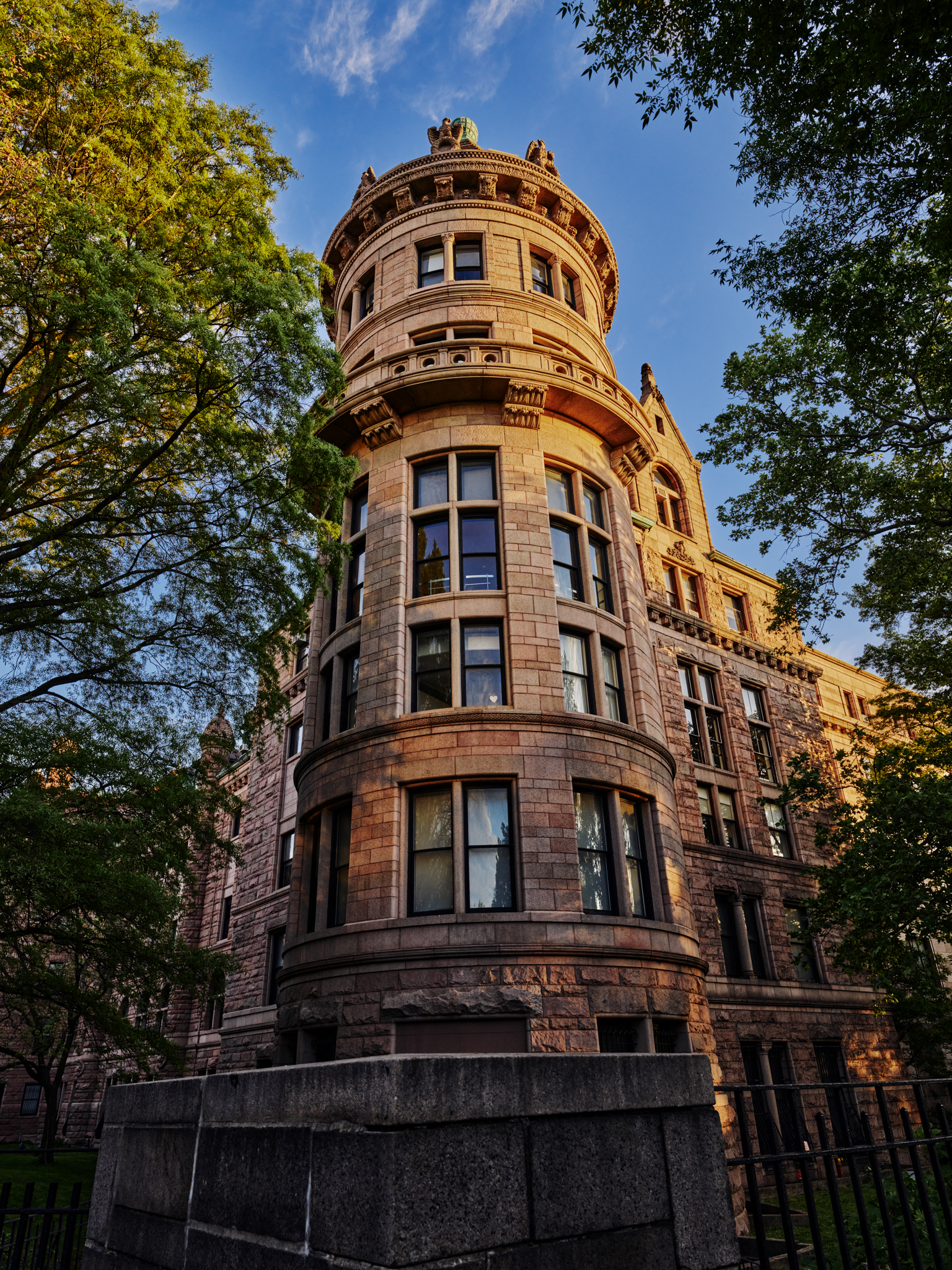
We talked last time about Frank Lloyd Wright’s Guggenheim Museum and whether or not building with giant stone blocks would make a comeback. Well, I still don’t have the answer (it’s only been a few weeks!), but I can say that we ought to take a look at a new building, which is an expansion of an old one.
Going across Central Park to the West Side from where the Guggenheim sits in New York, the American Museum Natural History (AMNH) has a new expansion called the Gilder Center Expansion. When I worked on it, I already had an interest in the museum, but I really dove into the history of the building once I got on the project. With this issue of Karjaka’s being rebirth, a couple anecdotes come to mind.

Rebirth can sometimes require mourning the end of what no longer suits you. Part of living is change. Part of growth is change. Sometimes it’s uncomfortable. Sometimes it is way overdue (hopefully when it is overdue, maybe it can be a touch less painful).
Many say that physical art and architecture not only capture a moment, but they do so with monumentality. But, they needn’t be stuck in time like a beetle in amber. That’s the beauty of being engaged with the built environment, we are active participants! We have agency to shift, modulate, demolish (even!) what no longer reflects who we are. For facades, that actually means a lot – you never get a second shot at a first impression.
AMNH’s historical facade facing Central Park had previously featured a statue that embodied the (racist) public sentiment of the times. The statue featured Theodore Roosevelt on a horse, and on either side of him, one figure that had been understood to be depictions of a Native American Figure and an African Figure. AMNH website reads, “The statue itself communicates a racial hierarchy that the Museum and members of the public have long found disturbing.” Even contemporary to Roosevelt, there was opposition towards Roosevelt’s racist beliefs. Much of his conservation work and contributions towards the natural sciences were done through seizing of Native American land. In addition, the depictions of the dress, accessories, and hair styling for both standing figures were inaccurate even by the standards of that time. Keeping that statue as the first sight entering a museum dedicated to the natural sciences and contemporary sciences seems fraught and incongruent with the museum’s mission. It took several years and many conversations that we can’t be privy to, but the statue has since been removed and is getting shipped to a recontextualized exhibit, with help from equity advocacy groups. To learn more, I do recommend a gander through AMNH’s website where you can find diverse perspectives of folks far more intellectual and eloquent as well.
Besides the statues, we really studied the stone that clad the original building facade that faces Central Park – Milford Pink, which is one of the historical New York architectural stones. It might be a coincidence that both the Guggenheim and AMNH wanted their stone cladding to be pink, but stone cladding on institutions is not a coincidence, especially one of great renown or with the want of establishing a presence (think of palaces, castles, fortified walls). Unfortunately, the Guggenheim ultimately couldn’t afford the stone, but both the old facade and the new expansion at AMNH did succeed in achieving the dream of stone on their facades – Milford Pink Stone no less!

So, what’s with this fascination with stone? It’s that je ne sais quoi about stone that keeps folks transfixed. And as a historical material, it can tie a facade to the past and still inspire awe in contemporary ways.
During the research of AMNH’s history and the design process for the new Gilder Center, I learned an extraordinary amount about stone. From about 300-200 million years ago, the continent we now know as North America was contiguous with Africa, South America, and Europe. They all existed as a single continent called Pangea. Because of Pangea and its eventual rupture into the separate continents, many of the coasts along each continent have stone that share similar qualities down to the molecular level, because at one point they were one and the same! Science is cool y’all!
And because of this, at one time, for cost and schedule reasons, stone in Portugal was considered as an alternative to the historical Milford Pink. But, as you can imagine the story (or the narrative as we call it in the biz) wouldn’t have been as compelling to use this stone as using true Milford Pink would connect the new Gilder Center with the historical facade overlooking Central Park. And, if you’ve been to AMNH, you can tell that before the Gilder Center, each wing and expansion of the Museum has looked a touch different than existing parts of the building. So, connecting the new facade with the old was important. Ultimately, the historical Milford Pink won out, and the same quarry in Massachusetts provided the stone for both the original facade and the new. We also conducted strength testing to ensure the stone from this section of the quarry was still as strong as we needed it to be.
You never get a second chance to make a first impression, so removing what no longer suits (outdated and racist statues) and celebrating what does (Milford Pink!), is quite imperative to communicating what your values are and what folks can expect from you. Using Milford Pink is a nod to the museum’s original main entrance and its history, much like keeping Roosevelt’s name on the Hall of Biodiversity (but not that statue). If this isn’t a rebirth I’m not sure what would be! – KC

